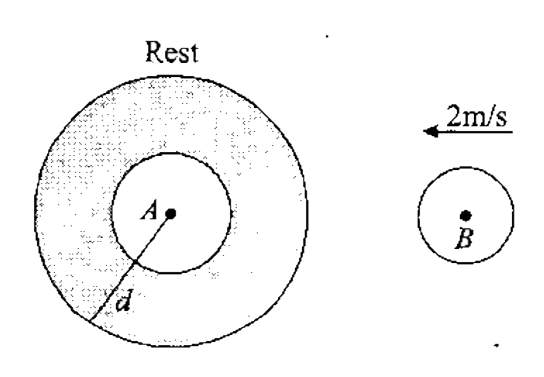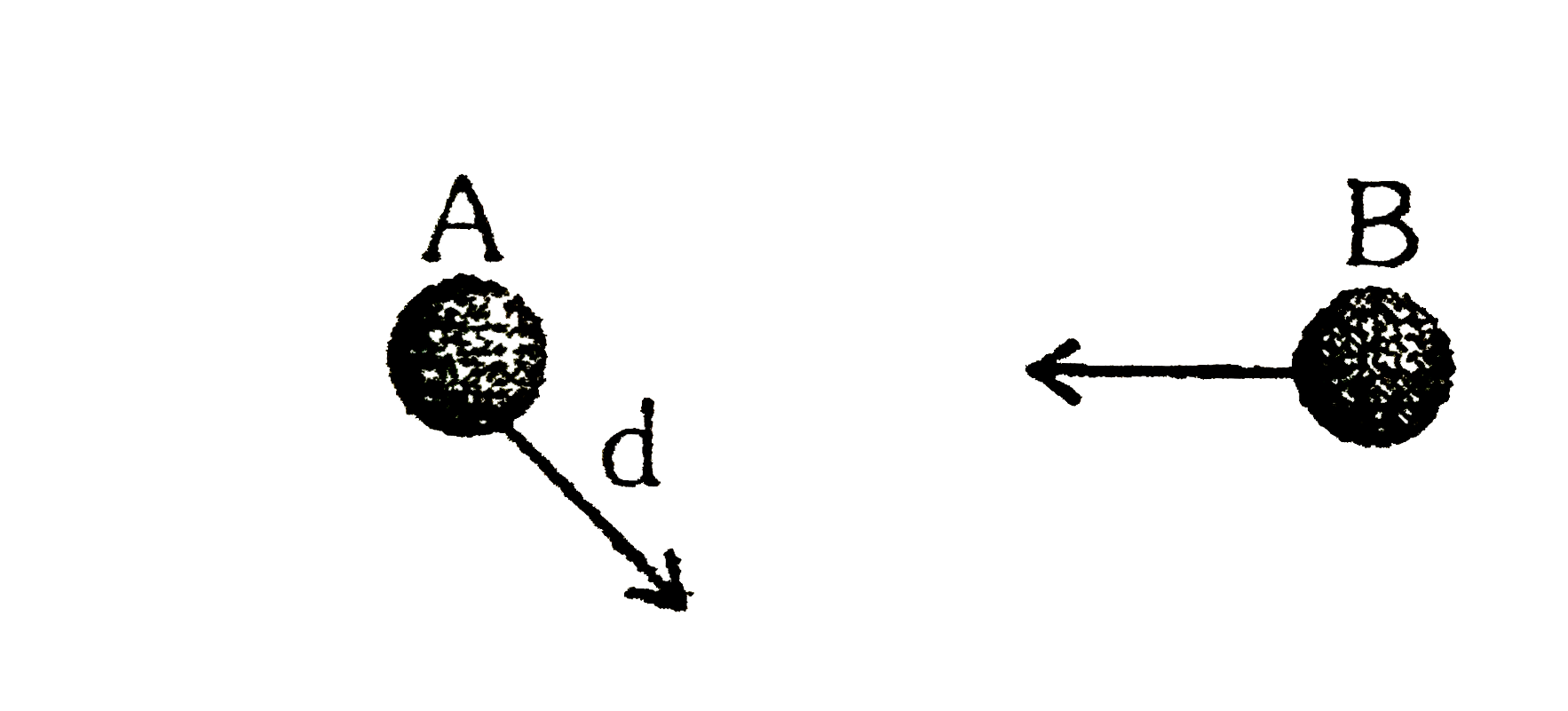Assertion: A quick collisions between two bodies is more violent than a slow collisions even when the initial and the final velocities are identical
Reason: Because the rate of change of momentum which determines the force is greater in the first case.
If both assertion and reason are true and the reason is the correct explanation of the assertion.
If both assertion and reason are true but reason is not the correct explanation of the assertion.
If assertion is true but reason is false.
If the assertion and reason both are false.
The correct Answer is:A
ΔP=F×t,t↓F↑ [ ΔP = constant].
Topper's Solved these Questions
Similar Questions
Anwer carefully, with reasons:
a) In an elastic collision of two billiard balls, is the total kinetic energy conserved during the short time of collision of the balls (i.e. when they are in contact)?
Is the total linear momentum conserved during the short time of an elastic collision of two balls?
c) What are the answers to a) and b) for an inelastic collision?
d) If the potenital energy of two billiard balls depends only on the separation distance between their centers, is the collision elastic or inelastic? (note we are talking here of potential energy corresponding to the force during collision, not gravitational potential energy).View SolutionState if each of the following statements is true or false. Give reasons for your answer.
a) In an elastic collision of two bodies, the momentum and energy of each body is conserved.
b)Total energy of a systm is always conserved,no matter what internal and external forces on the body are present.
Work done in the motion of a body over a closed loop is zero for every force in nature.
d) In an inelastic collision, the final kinetic energy is always less than the initial kinetic energy of the sytem.View Solution
Knowledge Check
- Question 1 - Select One
Assertion: A quick collision between two bodies is more violent that show collision , even when initial and final velocity are identical.
Reason: The rate of change of momentum determine that force is small or large.AIf both assertion and reason are true and the reason is the correct explanation of the assertion.BIf both assertion and reason are true but reason is not the correct explanation of the assertion.CIf assertion is true but reason is false.DIf the assertion and reason both are false. - Question 2 - Select One
Assertion: A quick collision between two bodies is more violent that show collision , even when initial and final velocity are identical.
Reason: The rate of change of momentum determine that force is small or large.AIf both assertion and reason are true and reason is the correct explanation of assertion.BIf both assertion and reason are true but reason is not the correct explanation of assertion.CIf assertion is true but reason is false.DIf assertion and reason are false. - Question 3 - Select One
Assertion : In case of elastic collision between two objects , speed of approach is same as speed of separation .
Reason : In case of elastic collision between two objects , linear momentum of the system remains conserved .AIf both assertion and reason are corret and reason is a correct explanation of the assertion .BIf both assertion and reason are correct but reason is ot the correct explanation of assertion .CIf assertion is correct but reason is incorrect .DIf both assertion and reason are incorrect .
Assertion: During head on collision between two bodies let Δp1 is change in momentum of first body and Δp2 the change in momentum of the other body, then Δp1=Δp2.
Reason: Total momentum of the system should remain constant.View SolutionThe elastic collision between two bodies, A and B can be considered using the following model. A and B are free to move along a common line with out friction. When separation between the surfaces is greater then d= 1m,the interacting force is zero, when their distance less than d, a constant repulsive force F= 6N is present. The mass of body A ism_(A) = 1kg and it is initially at rest. The mass of body B ismB = 3kg and it is approaching towards A with a speedv0=2m/s. Then choose the correct option(s).
 View Solution
View SolutionThe elastic collision between two bodies, A and B, can be cosidered using the following model. A and B are free to move along a common line without friction. When their distance is greater than d=1m, the interacting force is zero , when their distance is less d, a constant repulsive force F=6N is present. The mass of body A is mA=1kg and it is initially at rest, the mass of body B is mB=3kg and it is approaching body A head-on with a speed v0=2m/s. Find th eminimum distance between A and B :-
 View Solution
View SolutionAn object of mass 500 g moving with a speed of 10 m s−1 collides with another object of mass 250 g moving with a speed of 2 m s−1 in the opposite direction. After collision both the objects move in the same direction with common velocity. Write the proper order of steps to find out their common velocity after collision.
(a) Calculate the total momentum of two bodies before collision as m1u1+m2u2.
(b) Write down the given values of m1 and m2 in SI system
(c ) Write the expression for their total momentum after collision as (m1+m2) v where v is their common velocity.
(d) Assign proper signs to the initial velocities u1 and u2.
(e) Using law of conservation of momentum Equate the above two expressions and determine the value of v as m1u1+m2u2m1+m2View SolutionAssertion : When two real bodies collide then K.E of the system first decreases and then increases .
Reason : At the time collision bodies are first deformed and then due to elasticity bodies try to reform again.View Solution

